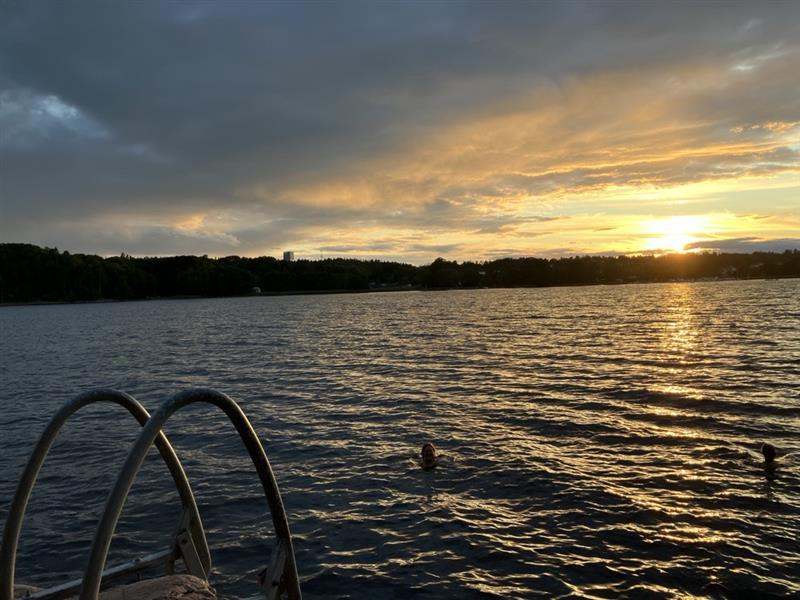October 23, 2025
Sarah Deckert
We understand that water is central to life. We are made of water and it is to be cherished. We respect water, work with it, live with it and nurture it. We are the custodians, guardians and knowledge holders of the lands, coasts, waters, ice and sky in our Homelands. We have sustainably managed, observed and cared for our lands, waters, and natural resources for the health and benefit of both people and Homelands for millennia. Our spiritual connections, ecological and biocultural knowledge, including lived experiences of climate change, have been, and continue to be, passed down from generation to generation through our stories, art, song, dance and cultural life…
Excerpts from “A message from the Indigenous Peoples Delegation to World Water Week“
Early, full and effective participation by Indigenous Peoples in governance and decision-making for environmental management, cultural heritage protection, and climate change is essential to enabling a sustainable future. We need to be empowered in generating global climate change solutions that embed both Indigenous knowledge systems and science.
Joining the Indigenous Peoples Delegation to World Water Week as an ally was a privilege. Held from August 25-29, 2025 in Stockholm, Sweden, World Water Week has been increasing efforts to highlight Indigenous voices over the past several years. This year, the delegation included Indigenous delegates from Australia, Aotearoa New Zealand, Brazil, Canada, Fiji, Nepal, United States, Sweden and more.
Along with Just Waters researcher Nicole J. Wilson, I had the opportunity to build relationships with and learn from an incredible group of Indigenous experts, water protectors, scientists and advocates. I learned too much for one blog post, so I’ll share a few snapshots.
Sámi presenters Sara-Elvira Kuhmunen and Inger Axiö Albinsson spoke about Sámi experiences of green colonialism. Green energy systems such as windfarms and hydroelectric dams are built in Sápmi, the land of the Sámi that covers parts of Norway, Sweden, Russia and Finland, and are lauded by governments and the public. Stockholm subway station walls are decorated with images of Samuel L. Jackson gazing off into the distance while holding a bag of Vattenfall Windfarmed Seaweed Snacks.
Just before I left for Sweden, I heard about the story of a 113-year old church, and the entire town of Kiruna, being moved five kilometers away to make room for a rare earth mine expansion.

Kiruna and the Vattenfall windfarms are both in Sápmi. Likewise, both projects, and many others, impact reindeer migration paths and grazing grounds—which in turn impacts Sámi livelihoods and culture. Listening to Sara-Elvira and Inger gave me a case of déja-vu—Manitoba Hydro anyone?
The many sessions on nature-based solutions (NbS) caught my interest. While I’m sure there are nuances I didn’t catch, my impression of NbS is that they can be summed up like this: Don’t drain wetlands and other watery places. Dig holes to collect water. Replace concrete with native plants. Follow Indigenous peoples’ lead. Leave forests alone. It almost seems too simple and yet, can you imagine the outrage if we tried to remove downtown parking spots to create a rain garden?
In a powerful moment, Professor Bradley Moggridge from the Kamilaroi Nation of Australia called for the implementation of “culture-based solutions,” which will achieve the intended results of NbS—supporting biodiversity, storing carbon, and more— while also protecting and revitalizing Indigenous cultures.

Dr. Tafue Lusama, a Tuvaluan Indigenous man, spoke to a whole of life philosophy that recognizes the interrelatedness of all things. He highlighted the special knowledge that children have about the lands and waters and encouraged the use of cultural indicators of biodiversity and water quality in addition to technical western scientific monitoring. He was also the only speaker I heard who referenced the experience of being in the water, saying, “You have only to immerse yourself to be refreshed.” As a person who ended every day of the conference by swimming in the 17°C water of the Baltic Sea, I wholeheartedly agree!
In each Indigenous-led session, some version of the opening quote was repeated: “Early, full and effective participation by Indigenous Peoples in governance and decision-making for environmental management, cultural heritage protection, and climate change is essential to enabling a sustainable future.”
While attendees listened attentively and applauded enthusiastically, the question remains: will they go back to their roles in project management, engineering and conservation with good intentions alone or will they offer early, full and effective participation to Indigenous communities that are impacted by their projects?
Powerful words spoken by Indigenous Hawaiian KaiLei’a Duriano are still ringing in my ears:
You have to be vulnerable and willing to risk… When you ask us, we are risking everything. I am pouring my entire cup into this larger cup, and if you are not willing to risk even a drop, I challenge you to reevaluate your role in working with Indigenous communities because it isn’t a project for us—it is a ripple into our tidal waves that we feel for generations to come.
Kailei’a duriano
What kind of ripples are you creating?

